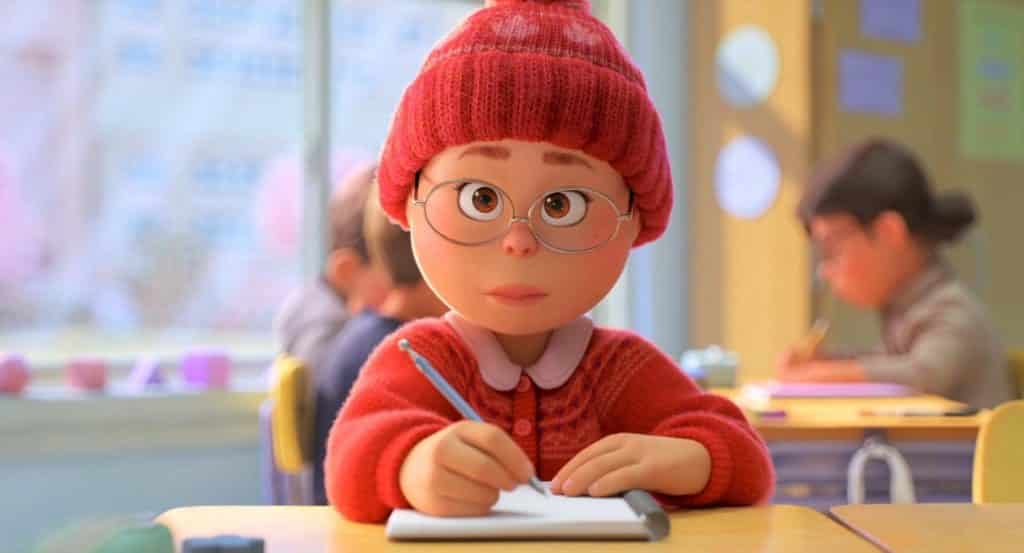In Turning Red, a hyperactive 13-year-old Toronto schoolgirl turns into a giant red panda one day – looks like a cat, but panda is what we’re told – and Pixar’s latest animated adventure swings into motion, as do thoughts about what this can all possibly mean.
The girl is called Mei, she is the bookish daughter of an immigrant Chinese family and her condition comes on suddenly after Mei has been humiliated by her mother over a crush on a dopey guy who works in a local shop. Mei is becoming an adult.
It’s a metaphor for a girl having her first period and becoming a woman, you’d think. Pixar seem to knock that idea down dead in a scene where Mei’s mother explicitly asks her daughter whether “the red peony” has finally bloomed. It hasn’t. Discussion over, metaphor parked.
Is this a kiddie-friendly reworking of Franz Kafka’s Metamorphosis – “Gregor Samsa woke up one day to find himself transformed into a huge bug”, except for “bug” read “red panda” (which looks like a cat).
Or, seen another way, is this the story of the child of an immigrant family who grows up to be something they’re not, an American – Mei likes boys, loud music and she likes to “gyrate”. She’s the classic swotty Asian student who’s threatening at any moment to become something other.
Or, yet another possibility. To quote Pixar honcho Pete Docter, an exec producer on the film, is this much more straightforwardly a case of Mei being “the Hulk, but cuter”?
It’s the first, obviously, but you decide.
As to plot: a diligent Chinese-American girl’s schedule – schoolwork, helping mum in the family business of running a temple, thinking about boys, hanging with her besties and looking forward to a gig by boyband 4*Town (*NSYNC meets Backstreet Boys – this is all set about 20 years ago) – is disrupted by her suddenly acquired tendency to turn into a giant red panda (which looks like a cat) whenever she experiences big emotion.
Pixar is now owned by Disney, and Mei is a more relatable everyday version of the Disney Princess. She’s not Polynesian royalty or Scottish royalty or watery undersea royalty, she’s a pretty average kid. Turning Red sits in the same emotional quartile as Inside Out, another Pixar film about an average kid asking whether we control our emotions or our emotions control us.
The good stuff. Sandra Oh as the voice of Mei’s severe but under it all loving mother – a standout. The animation, particularly of the big red panda, is gorgeous and obeys the laws of physics in the way animation often doesn’t, even if the panda does look like a cat. When this panda leaps across great chasms (like a cat), you can feel the push of its back legs and its progress through space. Turning Red doesn’t do knowing jokes for the adults, which has become tiresome. It does do female empowerment, which has also become tiresome, but it does it in a way that’s fresh – all the women in Mei’s family, grandma, aunties etc, have their own panda story to tell, it turns out.
Perhaps best of all, once it’s got its initial emotional payload safely in place, is the way it has a more nuanced psychological take on the usual “be yourself” mantra loved by Disney. In the Turning Red world it is clear that you can be yourself, but choices come with costs.
What’s wrong with it? Good question. Nothing really, though the storyline is incredibly insistent on the importance of friends, and then drops them whenever Mei’s family need to get a look-in, which becomes increasingly the case as the film goes on. There aren’t too many shocks. All in all it’s a nice, simple story told concisely. Pixar’s heat-seeking emotional missile remains unfired. The panda looks like a cat right to the final credits.
Turning Red – Watch it/buy it at Amazon
I am an Amazon affiliate
© Steve Morrissey 2022


